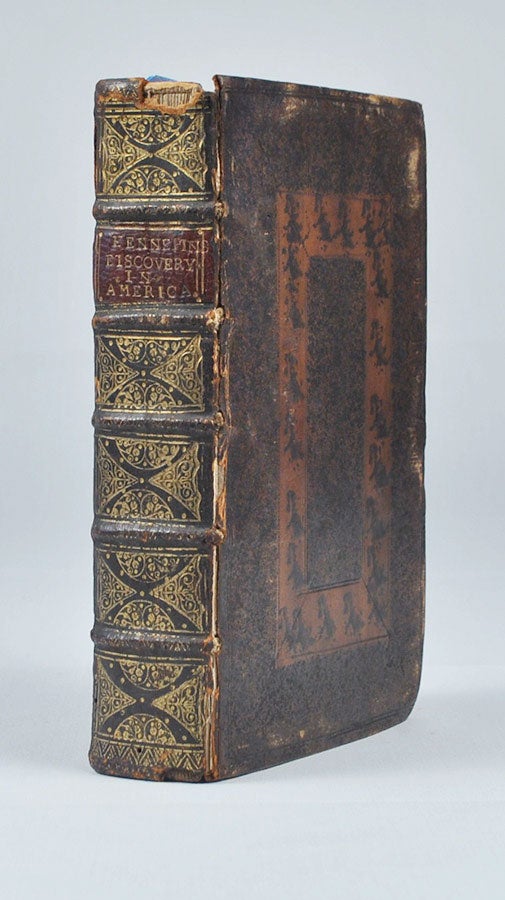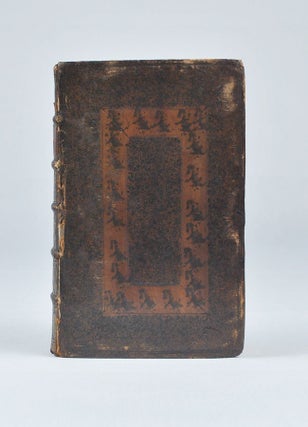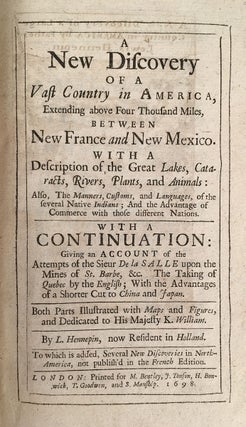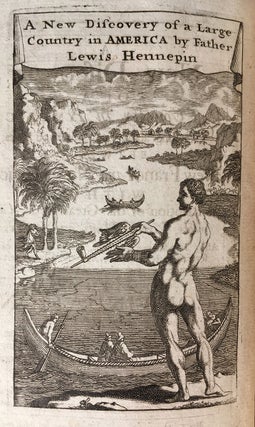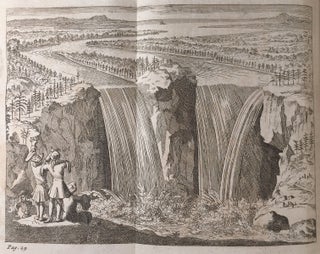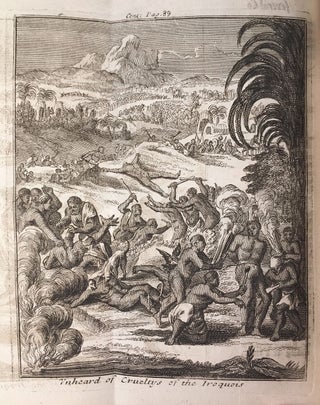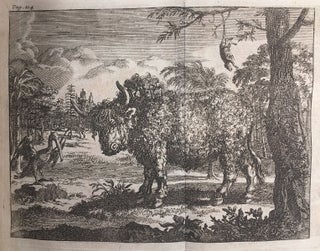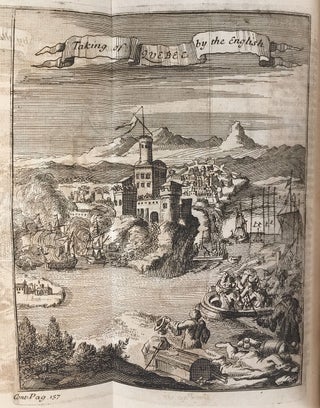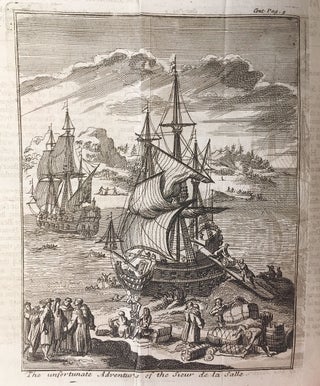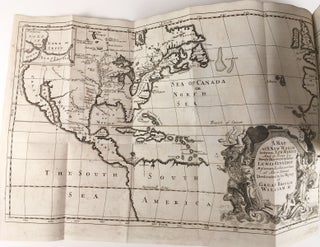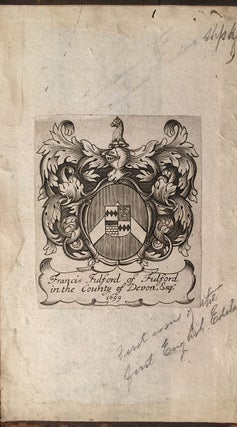A New Discovery of a Vast Country in America.
London: Printed for M. Bentley, J. Tonson, H. Bonwick, T. Goodwin, and S. Manship, 1698. 8vo, original full Cambridge-style speckled calf, circa 1698, five raised bands, red lettering-piece, gilt-stamped in 5 compartments, blind-stamped paneled covers, speckled edges. Engraved frontis., [22], 299, [1], [32],178, [2], 303–355 pp., plus two folding maps and seven plates (six of them folding) frontis included. Armorial bookplate of original owner “Francis Fulford of Fulford in the County of Devon Esq. 1699.” Housed in an old cloth slipcase. The first English edition, first issue (the “Bon” issue) of Father Louis Hennepin’s enormously popular but partly fictitious and thus controversial account of his pathbreaking explorations in North America. This is an attractive, un-restored copy in its original late-17th century binding, and difficult to find as such. Offering one of the first accounts of the interior of North America—including the first published description and illustration of Niagara Falls—this important narrative was originally published in French in 1697 and then in English in the present edition of 1698. This edition combines Hennepin’s second and third works: Nouvelle Découverte (1697) and Nouveau Voyage (1698). Father Louis Hennepin (1626–1704) of the Spanish Netherlands was a Roman Catholic priest and missionary of the Franciscan Recollet order, who was stationed—at the behest of Louis XIV—in French Canada beginning in 1675. There he would preach in Quebec and founded a convent at Fort Frontenac in 1676. Three years after his arrival in French Canada, Hennepin embarked on an expedition— spearheaded by his fellow missionary and provincial superior Sieur de La Salle—through the Great Lakes via the 45-ton barque Le Griffon, heading for the Gulf of Mexico by way of the Mississippi River. In January 1680, Hennepin was present with La Salle at the construction of Fort Crevecoeur on the Illinois River, proximate to present-day Peoria, Illinois. Following La Salle's departure from the expedition (to procure funds to prolong the journey), Hennepin ascended the Mississippi river, toward the area of present-day Minnesota—venturing farther northwest than any other white explorer. After sailing up the Mississippi river, Hennepin was captured by a sizable war party of Sioux Indians, who brought him and his two men to their own territory. It is here that he “discovered” and named Saint Anthony Falls. Hennepin's thoroughgoing study of the culture of the Native Americans is a treasure trove of information. Hennepin spent eight months with the Indians, and was later rescued by a small party of French explorers led by Daniel Greysolon du Lhut, who helped the missionary reach Green Bay via the Wisconsin River. Hennepin spent the winter in Mackinaw, after which he returned to Quebec in April of 1682, and then to France that same year, where he would compose these narratives. To be sure, the veracity of Hennepin’s claims has since been seriously called into question—and sometimes outright repudiated—most notably by Francis Parkman. For instance, Hennepin infamously claims in Nouvelle Découverte that he descended the Mississippi river to its mouth at the Gulf of Mexico—and then ventured back up. He also curiously states that he omitted detail in his accounts of his travels because he did not wish to steal the limelight away from La Salle for having discovered the Mississippi River. Despite these flaws, Hennepin's narrative presents a largely reliable account of his actual travels and experiences. In Nouveau Voyage, the second volume contained here, Hennepin availed himself of contemporary works to extrapolate on La Salle's own exploration of the Mississippi River and the creation of Fort Saint Louis, as well as La Salle's murder. In a later edition of A New Discovery of a Vast Country in America, editor Reuben Gold Thwaites notes that Hennepin's narratives constitute "invaluable contributions to the sources of American history; they deserve study, and to this day furnish rare entertainment. We can pardon much to our erratic friar, when he leaves to us such monuments as these." Translated into numerous languages and appearing in more than forty published editions, A New Discovery has enjoyed as much popularity as it has caused controversy and rebuke among later scholars. An unusually appealing copy of this classic of Americana, in its original 17th century binding. REFERENCES: Sabin 31371; Church 772; Howes H416; Graff 1862; Wing H1450. CONDITION: Good, hinges cracked, but covers firmly attached, head and foot of spine chipped, moderately worn, contents clean and fresh throughout, 1” tear to inside edge of second map. Armorial bookplate of original owner “Francis Fulford of Fulford in the County of Devon Esq. 1699.” Housed in an old cloth slipcase.
Item #3185
Sold


